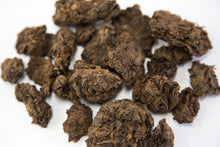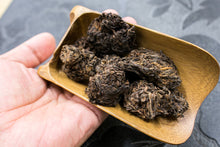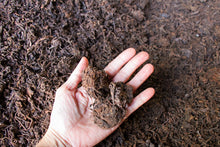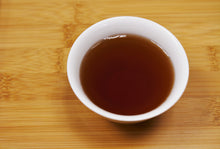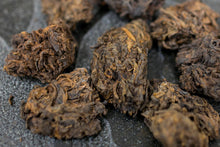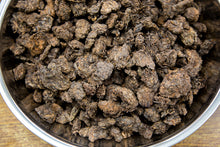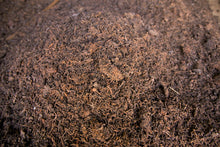
The Da Cha Tou is a rare and unique tea, crafted from tea leaves harvested from ancient tea trees growing at elevations over 2000 meters in Wu Liang Shan, Lincang.
Although it was produced relatively recently, it offers a smooth drinking experience with intense dried fruit notes reminiscent of dates.
Purchasing Cha Tou can be quite challenging.
In Chinese, Cha Tou translates to “tea head,” referring to the small blocks of tea formed naturally during the fermentation process of ripe pu-erh tea. Due to its exceptional flavor and taste, Cha Tou is highly sought after by tea connoisseurs in China. However, tea manufacturers often reserve it for their own enjoyment, making it difficult to find on the market.
Da Cha Tou: Big Cha Tou
We are thrilled to have acquired the very rare Da Cha Tou (where "Da" means "Big" in Chinese). Not only is Da Cha Tou scarce, but it is also renowned for its exceptional quality in both taste and flavor.
Formed naturally during the fermentation process, Da Cha Tou comes in irregular sizes and shapes. Upon our first tasting, we were captivated by its unique drinking sensation. Given the limited stock of Da Cha Tou, its original form is quite beautiful, making it a delight to drink. Therefore, we decided to offer this tea as a loose leaf variety.
Cha Tou typically comes in various sizes: large, medium, and small. After the pile fermentation process, manufacturers sift the tea to sort and grade it into different categories, including Cha Tou, Gong Ting, Special grade, and grades 1, 3, 5, and 9. Generally, from 8 to 10 tonnes of tea piled for fermentation, less than 1-2% ends up as Cha Tou.
Spring Cha Tou: Highly Sought After Yet Extremely Limited
The fermentation of ripe pu-erh tea involves aerobic bacteria, anaerobic bacteria, and mold. Cha Tou forms slowly during this process through the interaction of tea constituents with the polysaccharides produced by bacteria. Since spring tea is particularly rich in polyphenols and other beneficial compounds, Cha Tou naturally emerges during its fermentation. In contrast, it typically does not form in summer tea because the faster growth during this season, due to increased rainfall and higher temperatures, leads to a lower concentration of certain tea constituents.
Occasionally, a small amount of Cha Tou may develop in autumn tea, but this is quite rare. For instance, only about 20-30 kg of Cha Tou may be produced from multiple tonnes of fermented autumn ripe pu-erh tea. However, autumn Cha Tou tends to be loose and fragile, while spring Cha Tou is solid and substantial due to its rich content of tea constituents. Compared to spring Cha Tou, autumn Cha Tou offers a thinner, lighter taste and lacks complexity.
Unfortunately, the quantity of ripe pu-erh tea produced from spring tea is very limited, making Cha Tou even scarcer. Additionally, many tea merchants actively seek out Cha Tou, resulting in fierce competition to acquire it. There have been instances where the Cha Tou we had pre-booked was intercepted by others.
Unique flavor is formed during natural maturation process
Da Cha Tou is unique not only because of its shape. We can easily tell the difference in flavor and taste when we compare it with loose ripe pu-erh teas of the same batch.
The Da Cha Tou has rich dry-fruity flavor with a thick taste and long-lasting finishing. In addition, it gives very silky and creamy mouth-feel. I think the reason why Cha Tou gives very distinctive flavor and taste is because of the process of its formation. Cha Tou is formed in the middle of fermentation. At this stage, the tea leaves forming Cha Tou is not fully fermented yet. As tea leaves are firmly coagulated, there is no oxygen inside it. Due to the heat generated from the pile of ripe pu-erh tea on microbiological fermentation and the high moisture content, it undergoes further maturation; that could be the reason that develops unique and complex flavor.
Unique Aging
One of the reasons why Cha Tou is loved by so many people is that it ages excellently well. The changes of flavor are much more significantly than common ripe pu-erh teas. It reminds me of Chinese dates, dried apricots or prunes, raisins and sometimes brandy.
Whitish powder on the surface is actinomycetes
Some of Cha Tou appear whitish as it contains white filaments on its surface. It is pretty normal and not harmful. Please do not worry as it is not mold. It is the friendly bacteria called actinomycetes which is the key bacteria appears when the fermentation of ripe pu-erh tea is successfully carried out. If any problem occurred during fermentation, the white filaments would not appear. Usually, these whitish filaments are not noticeable after compression. We hardly see these white filaments on the compressed tea because they disappear once tea is steamed for compression.







